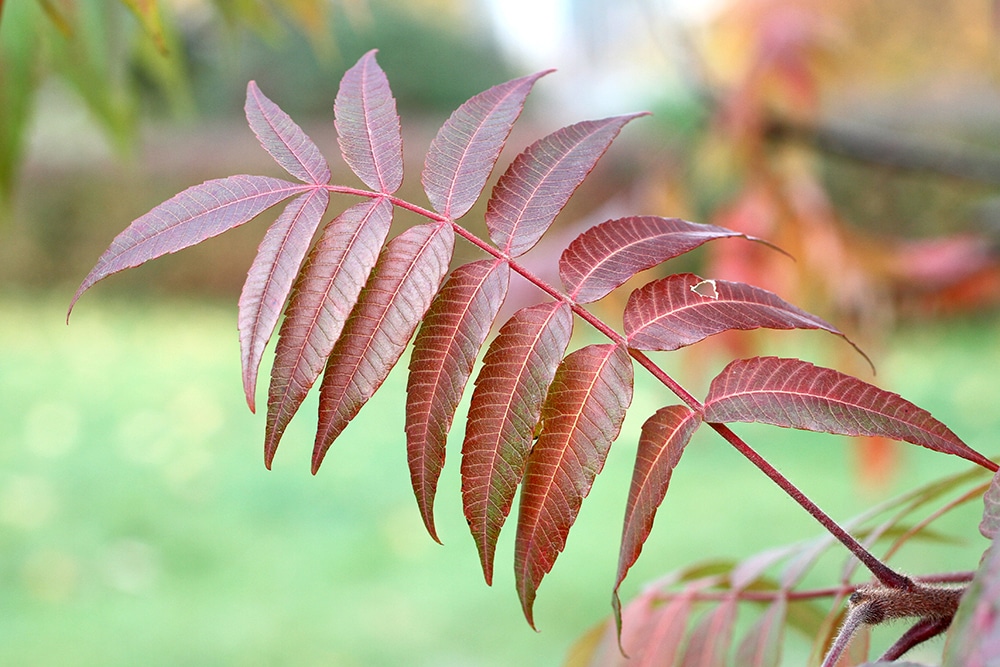How to Tell the Difference Between Harmless and Poison Sumac

You may have heard of poison ivy and oak, but have you ever heard of Sumac? This plant is not as well-known as poison ivy or poison oak, but it can still cause a lot of discomfort if you come into contact with it. Poison sumac, or Toxicodendron vernix, grows in wet, marshy areas and can be challenging to identify.
This blog post will teach you how to identify poison sumac and tell it apart from other harmless varieties.
What Does Poison Sumac Look Like?
Poison sumac is a shrub or small tree that can grow up to 30 feet tall. It has smooth, hairless stems and leaves that are arranged in pairs. The leaves are oval-shaped and have pointed tips. They are also slightly glossy and have a smooth texture. Poison sumac produces flowers and fruit that are small and greenish-white in color.
The key to identifying poison sumac is the number of leaflets on each leaf. Unlike harmless Sumac, which has anywhere from 11 to 31 leaflets, poison Sumac has only 7 to 13 leaflets on each leaf. Another distinguishing feature is the color of the stems. Poison sumac has reddish-brown stems, while harmless Sumac has greenish-gray stems.
Where Does Poison Sumac Grow?
Poison sumac grows in wet, marshy areas with standing water, such as swamps, bogs, and other areas. It is most commonly found in the eastern United States, particularly in Florida, Georgia, and Louisiana. Poison sumac can also be found in parts of Canada.
How to Avoid Poison Sumac
The best way to avoid poison sumac is to avoid areas where it grows. If you find yourself in an area where poison sumac is present, wear long pants, long sleeves, and gloves to protect your skin. You should also avoid touching anything that may have come into contacts with the plant, such as clothing or gardening tools.
Symptoms of Poison Sumac Exposure
If you come into contact with poison sumac, you may experience some uncomfortable side effects. It's important to monitor any symptoms as they can be especially dangerous if you have touched or ingested the plant. Some of the most common side effects of poison sumac exposure include:
Rash: A red, itchy, and often painful rash can develop within 24 to 72 hours after exposure to the oil from the poison sumac plant.
Blisters: The rash may also be accompanied by small, fluid-filled blisters that can break open and ooze.
Swelling: The affected area may become swollen and inflamed, particularly around the eyes and face.
Difficulty breathing: In some cases, breathing difficulties may occur due to swelling of the airways.
Fever: A mild fever may develop in some individuals.
Headache: Some people may experience headaches or migraines after exposure.
Nausea and vomiting: Ingestion of poison sumac may cause gastrointestinal symptoms such as nausea and vomiting.
The duration and severity of symptoms can vary depending on the individual's immune response and level of exposure. In general, symptoms may last a few days to several weeks and sometimes even longer. Should you experience severe symptoms, it is best to contact your medical provider or doctor for treatment.
What to Do if You Encounter Poison Sumac
Like poison ivy or oak, if you come in contact with poison sumac, you should take immediate steps to prevent and treat any side effects. You should begin by cleaning the affected area thoroughly. Tecnu Extreme Poison Ivy Scrub is an excellent solution providing effective relief that cuts through the toxic oil. Wash the area within eight hours of exposure for maximum effect.
Once the area is clean, soothe the skin with an anti-itch gel. Tecnu Calagel Pain Relieving Gel is the ultimate solution providing instant relief for itchy skin.
Next, protect others by cleaning any fabric, clothing, tools, or equipment that may have also come into contact with the poison sumac. Use Tecnu Detox Wipes to wipe down any other objects that may spread the toxic oil.
While poison sumac is less common than other toxic plants like poison ivy or oak, it's important to be aware of your surroundings. Always look for plants that may put you or your loved ones at risk, and should you accidentally come into contact with the plants, be prepared to take action fast!




